This website uses cookies so that we can provide you with the best user experience possible. Cookie information is stored in your browser and performs functions such as recognising you when you return to our website and helping our team to understand which sections of the website you find most interesting and useful.
CAMINO FAQ

You’re never alone on the camino, unless you really want to be. When walking the camino we find ourselves with time and reflection upon our minds. A great cocktail to have amazing conversations and make new friends. Being alone during the walking is important part of the path but in the evenings the community of the camino is like a transient city. You can find someone once then not see them again for a week. Others will be with you each step of the way. Its the perfect mix of solitude and community!

It is up to the airline company and the security. A metal walking stick has been classified as a ski pole, which is prohibited, but has also been classed as a walking aid, which is not. Normally it wouldn’t be allowed as a hand luggage, but would be allowed as hold baggage. You wouldn’t take the chance if it would be confiscated so better to put it in the cargo hold baggage. Perhaps you can give some extra protection by putting them in cardboard mailing tubes or wrapping them with foil.

Taking wooden sticks to Spain on a fight is up to the airline company and the security. Getting them back to Australia or to the States is much more difficult with the strict quarantine laws. Try to wrap it in black plastic and tie it up with a tape for the travel, check it in as hold luggage and cross your fingers.
 This is a document issued by the Chapter of Santiago Cathedral, and it certifies that a person has made the pilgrimage to Santiago de Compostela. It is written in Latin. To obtain it, you need to show a stamped credential and have completed a minimum of 100 kilometres on foot or horseback or 200 kilometres by bicycle.
This is a document issued by the Chapter of Santiago Cathedral, and it certifies that a person has made the pilgrimage to Santiago de Compostela. It is written in Latin. To obtain it, you need to show a stamped credential and have completed a minimum of 100 kilometres on foot or horseback or 200 kilometres by bicycle.

If you plan to stay every night in an albergue or hostel, don’t take a mat with you, you will sleep in a normal bed or on a mattress. Many pilgrims bring mat to the Camino but after some stages they just throw it away or leave it in the albergues, so if you really need one, you can get one for free anywhere. The only reason when you need a mat is sleeping in a tent.
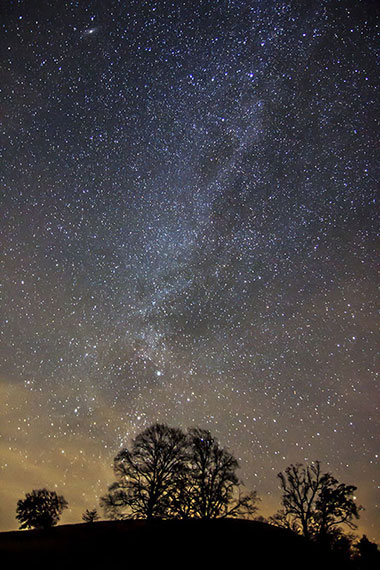
You could try it! It is quite magical. The Meseta would be good for the stars and easily walked in parts, yous hould need a light to find the signs on the way. Just remember that albergues have quite strict closing and opening times so it will be very hard to find a place to sleep. However please remember that in Spain nowadays all pedestrians walking in these hours are required to wear a reflective vest.

Don’t worry about the mossies, this problem doesn’t exist on the Camino. You have to be careful only at the canals leaving Boadilla del Camino, this is the place where they can come, nowhere else. Don’t take mosquito spray to the Camino with you.

A headlight is a must sometimes:
- you need it for packing at dawn with a red light (you can’t wake up others)
- if you need to walk in the dark (it’s required a strong headlight to find the signs)
- in the evening alberues turn off the light at 10 the latest. If you want to do anything after this time, you will need a headlamp.

It depends how important it is to you. If you can handle the additional weight, there is no reason not to take it. If you can really play the guitar it can cause one of the magic highlights for your camino friends. However, you should be a little careful about when you play it in the albergues as people really need and want to sleep and would probably not enjoy it in the evening. Afternoons should be OK.

The credential is an official document that certifies and identifies the pilgrim. It shows his/her personal data, maps of the Pilgrim’s Way and boxes where the stamps are entered in the places where the pilgrims pass through, and the date. This document is essential to stay in public hostels (albergues) and obtain the ‘Compostela’, but it does not give any other rights to its holder.

You shouldn’t be afraid of the dogs on the Camino. You will most likely hear dogs bark most days while walking. Having a dog in the yard is very normal, at least in Galicia. 99% of them are closed in or tied up. Some time (one or two times in a 30 days camino) the smaller dogs run loose, and they may come over and smell you and then just move on. They don’t attack, just stay calm. If you are really nervous about them, just bring a simple stick, dog whistles or pepper spray with you.

Stamps are available in many places along the routes: in churches, albergues, hostales, town halls (ayuntamientos), bars, restaurants and many other places. Basicly stamps are for free. Please note, 2 stamps needed every day in the last 100kms!
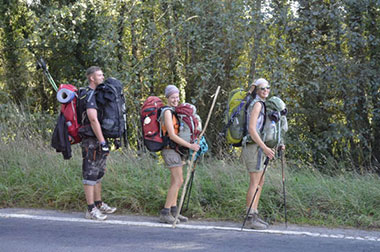
It is important to train before your Camino. Make sure your shoes are broken with your trekking socks. Some pilgrims do not train and they are the ones who have major problems, blisters, knee problems and shin splints at the beginning of their Camino. If you have little training post your backpack forward to your next destination. This gives you some time to get used to walking.

Weight is a key question on the Camino. A sleeping liner seems to be a much better solution with its 200-300 g weight than a 600-700g sleeping bag. From the middle of June until middle of September, when the outside temperature is always above 30 C travel liner is adequate. Don’t forget that there are no air-conditions in the albergues, so summer nights are too warm to sleep in a sleeping bag. In autum, winter and spring always take a sleeping bag with you but choose the lighter version (600-700 g) which is comfortable between 10 and 20 C. All the albergues has heating, so the temperature never goes below 10 C.

Nowadays you can find wi-fi in more than half of the albergues. If they have no wi-fi, they usually have a computer with internet access. Nearly all small towns have libraries with free internet access. In bigger towns there is a free wi-fi zone on the main square (Pamplona, Burgos, Leon), and of course you can visit some restaurants and bars which offer free wi-fi.
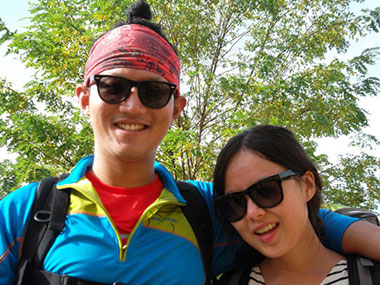
Glasses are more practical on the Camino, but you can also easily use your contact lenses on your way, only you should be concerned about the “flying dust” which is very painful when it gets into your eye or scrubs your eyes and the lenses. Wear soft contacts lenses that you can replace monthly, but take them out at night. Have a few extra pairs just in case. Don’t miss the travel size lens solution too. Weight and space is minimal.

- At the first sign or feeling of a blister, stop and remove your boot and sock.
- If not a large blister apply a moleskin (Compeed or Salvequick blister care) which is an adhesive rubber skin. This will pad the blister and prevent you experiencing further discomfort!
- If large blister has formed, take a needle and sterilise it with alcohol or fire. Attach some thread through needle not actually making a knot in the thread.
- Pierce blister with the needle stringing thread through blister at 2 carefully selected points.
- Drain the blister until all fluid has been removed, then tie a knot in thread. This will soak up any excess of remaining fluid in blister.
- Apply disinfectant generously to all over the blister (betadine) as this will prevent nasty infections.
- Place a small dressing on the blister and finally cover it with surgical tape on to the skin. Be generous with the tape and stick it well and tight ensuring that the whole dressing is covered.
- Carefully put on your sock so as not to disturb the dressing and gently put on your hiking boot.
Your First Aid Pack should therefore include all the following items : Scissors, Surgical Tape, Betadine, Dressing Pads, Moleskin, Needle & Thread
 No, they don’t. The only requirement to be a Pilgrim and to stay in albergues is to have a Credential (pilgrim’s passport) what you can get in the Pilgrim’s office or in bigger albergues.
No, they don’t. The only requirement to be a Pilgrim and to stay in albergues is to have a Credential (pilgrim’s passport) what you can get in the Pilgrim’s office or in bigger albergues.

Instead of sending your unnecessary staff home for an unreasonably high fee, you may also send them ahead to one of the Post Offices in Santiago. The nearest Post Office (Correos) to the Cathedral is: Lista de Correos Travesa de Fonseca 15705 Santiago de Compostela Spain Please note that the Post Office will only keep your package for 30 days!

Pamplona – Roncesvalles bus service: In winter season (from 1st September until 30th June)
- Monday-Friday: departs at 18:00 p.m.
- Saturdays: departs at 16:00 p.m.
- Sundays and holidays: no service
In summer season (from 1st July until 31st August)
- Monday-Friday: departs at 10:00 a.m. and 18:00 p.m.
- Saturdays: departs at 10:00 a.m. and 16:00 p.m.
- Sundays and holidays: no service
Duration: 1 hour 10 minutes Bus leaves from the main bus station of Pamplona (tickets can be purchased there) Ticket prices: 6 EUR/person, 6 EUR/bicycle More info: http://www.autocaresartieda.com/?scc=roncesvalles

The best solution is a camel bag (also known Camelback hydration system) which is normally built in a backpack or waist pack containing a reservoir or “bladder” commonly made of rubber or flexible plastic. The camel bag is connected to a drinking tube. For walking on the Camino you only need a “naked” reservoir what you can take into your backpack with a long drinking tube. The big advantage of this system is that it allows the wearer to drink hands-free. Recommended reservoir size range from 1.5 to 2.0 liters. 2 x 600-800 ml drinking bottles also work well. They are easy to handle, fit easily in the side pouch of your bag and can be carried in your hands if needed. It doesn’t matter if the bottles are made of plastic or alu both are light enough. You can also hang your drinking bottle to your strap with a carabiner, otherwise don’t forget, that anytime you want to drink, you have to take them off from your backpack or pouch of your bag. If you don’t want to buy a special bottle, you can use 2x500ml ordinary plastic bottles. They are also easy to handle, easy to change when it is damaged, but not eco-friendly at all.

It is not easy to walk with a dog, but it can be done with some planning. Dogs are not allowed in almost all of the hostels and albergues. There are some villages where local dogs are unfriendly. It limits your sightseeing (fo example if you want to go to a Cathedral). Anway if you sleep in a tent all the time, it is much easier with a dog, but you’ll have a different camino then others. Caminoteca tip: important to bring a little backpack for the dog, so he could carry his own food and water.

Blisters are caused by abrasion against the skin. Lubricating the skin can keep that abrasion from causing blisters. The lubricant you use should be one that will last for the length of your walk. Apply any lubricant liberally to your feet in any area that is prone to blistering.
- Lubrication – Vaseline or similar gel – It’s cheap and it works. Put great gobs of vaseline on your feet before you put on your Cool-Max socks. No, your feet don’t slide around in your shoes – the socks prevent that. No, it doesn’t feel slimy once you put on your socks. It doesn’t wash out well but who cares – these are walking socks!
- Socks – Select socks that fit your foot without being too tight or too loose. Choose soft wicking fabric such as coolmax (NO cotton). Cotton absorbs moisture and is usually a little rough in texture. Ensure that the socks do not have bulky stitching at the toes or heels. Lorpen, Thorlo, WigWam, and Thermolite are a few of the popular brands. Some people choose to wear two layers of socks (or a sock that is made with double layers) to aid in blister prevention.
- Shoes – As with many other walking ailments, begin with the shoes. Your shoes must fit properly to avoid blisters. Too snug or too loose is always a problem. Be sure that you have enough room to wiggle your toes inside the toe box, and your heel does not slip when you walk. But be careful! During your camino your feet will swell at least 1 european size becasuse of everyday-walking and warm up of your feet!!! Choose hiking shoes or hiking boots, but not a running or simple street-wear shoes. Choose shoes that breath well. Shoes with a lot of fabric or mesh combined with leather are better than a solid leather shoe.
- Rest your feet – When you have a break during the walk take off your shoes and socks to dry them a little, and rest your feet naked.
- Moleskin – Moleskin acts like a second layer of skin to help prevent new blisters while soothing and healing those that already exist. If you feel a little pain anywhere on your feet which can become a blister, do not hesitate, take off your shoes and socks and cover that point with a moleskin immediately. Popular brands are: Compeed, Salvequick

Bedbugs still exist on the Camino. In some albergues (mainly in the older ones) bedbugs can cause problems. They live in the mattresses and active during the night. Some pilgrims (not many) can be inflicted by them. This practically means that bites appear on the whole body and you have more in each hour. Bedbug rashes are allergic reactions and may take up to a week to manifest, one of the reasons it is hard to pinpoint where one was bitten. The rashes take a while to go away but go to the pharmacy and get some lotion and some oral antihistamine to ease the itch. You must spray everything with bug spray, your backpack, your sleeping bag, your clothes, and wash them all, including the ones you wear. Don’t forget to spray your shoes as well. The bugs can hide in every tiny seam and crevasse.

The credential costs 1€ and can be obtained in bigger albergues, churches and in the pilgrim’s offices.
Practically:
Saint-Jean-Pied-de-Port: Amies du Chemin de Saint Jacques at 39 rue de la Citadelle (Pilgrim’s office, Accueil Pélerins)
Roncesvalles: Collegiate Church of Orreaga/Roncesvalles (open 10.00 am-13.30pm, 16.00pm-19.00pm)
Pamplona: Albergue Jesús y Maria, Calle de Compañia 4 (Close to the Cathedral of Pamplona)
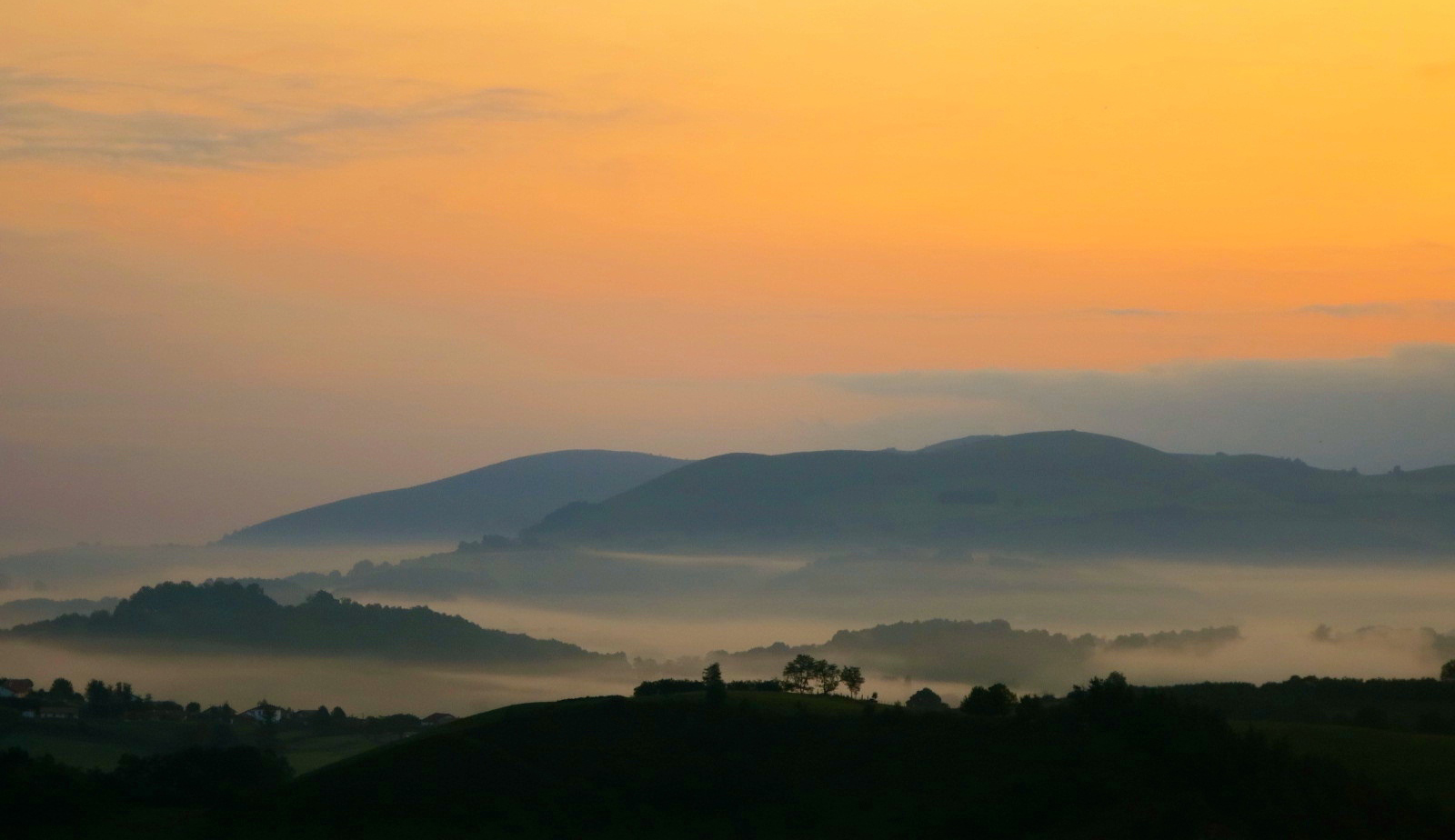
It depends on many factors:
- how early the Sun rises. It is hard to walk in the dark (regardless of a good head lamp) but there is a special atmosphere.
- from july until mid September it’s very hot from 11 am (38-40 C), so you should strart your day as early as possible to reach the next destination in time.
- also from july until mid September there are so many pilgrims that some of the albergues will be full by the time you get there
- It is hard to stay in bed for late when everybody around you swiches on the light, gets ready and makes noise.
Caminoteca’s advice: start your day as early as possible – otherwise use ear plugs and eye mask 🙂

- Albergue Jesús y Maria in Pamplona
- Albergue de la Fuente Casa de Austria in Los Arcos
- Albergue Casa del Santo in Santo Domingo de la Calzada (http://www.alberguecofradiadelsanto.com/como_lle.htm)
- Albergue Municipal Casa del Cubo in Burgos (http://www.caminosantiagoburgos.com/)
- Albergue El Puntido in Hontanas (http://www.puntido.com/)
- Albergue in Boadilla del camino (http://www.boadilladelcamino.com/)
- Albergue Siervos de Maria in Astorga (http://www.caminodesantiagoastorga.com/)
- Albergue Ave Fenix in Villafranca del Bierzo (http://www.albergueavefenix.com/)
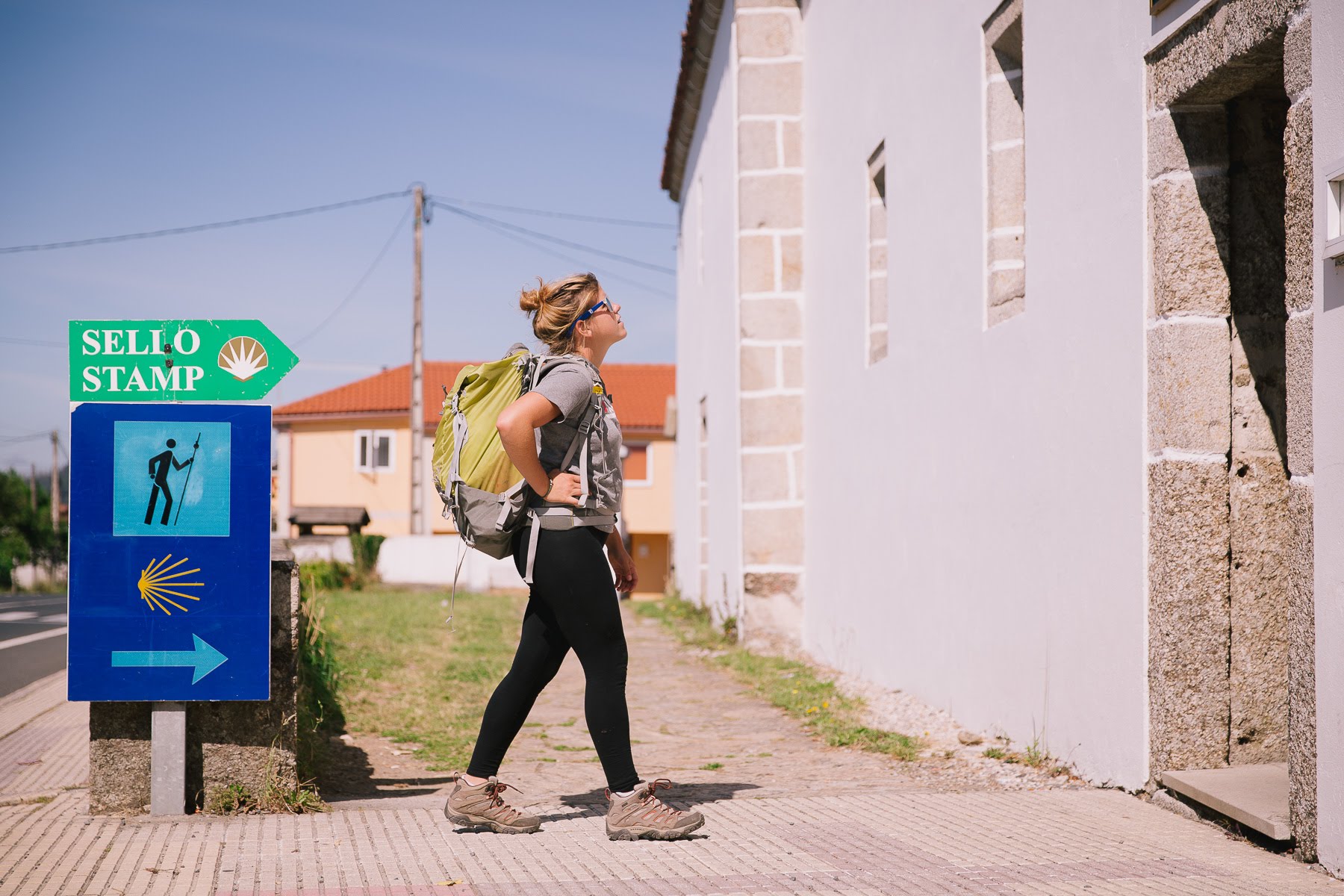
Technical t-shirts seem to be a better solution than simple cotton t-shirts. They are lighter and dry much faster, 1-2 hours in summer, 3-4 hours otherwise. You should take only 2 of them for your Camino changing them day by day.
If you don’t want to wash your t-shirts every day, chose a merino wool t-shirt. This keeps you warm when it’s cold, and keeps you you cool when it’s hot. They dry in a flash and don’t stink.

If you don’t want to start walking on the Camino on the day when you arrive at your starting point, you can sleep in an albergue, the only requirement is to have a Credential (pilgrim’s passport) that you can get at the Pilgrim’s office or in bigger albergues. However you don’t need to stay in the albergue where you buy your credential, you can choose another one.
Please don’t forget that usually you can stay only one night in the same albergue.

- book (except for guide books)
- dictionary
- hair-dryer in summer
- iron
- jeans
- leather coat
- knitted sweater
- city-shoes
- watch
- alarm clock
- phone, note book, tablet
- metal spoon, fork (tip: spork)
- plate
- cooking vessels
- make-up
- pyjamas
- bathrobe
- battery charger
- pillow (tip: inflatable pillow if really necessary)
- washing powder (tip: travel size liquid wash)
- normal/big size shower gel, shampoo, deo spray (tip: small/travel/mini size personal care products)
- alcoholic beverages
- water steriliser
- kettle

It depends on your requirements and budget. If you sleep in an albergue every day, it costs 10 Euros on average. But in a hostel you can get a bed for 20-25 euros per night. If you have breakfast in an albergue it costs 3 euros somewhere else it’s 5 euros. Many places offers pilgrims’ menus for lunch and dinner for 10 euros which means three courses and it’s completely filling. You can cook for yourself which means 6-8 Euros per person. On top of this you will need coffee, drinks, other snacks for 5-10 euros per day. Make your short calculation for Camino Francés with our Cost Calculator But you don’t need to bring a lot of cash with you, you can use your card in the shops and you can withdraw cash easily from many ATMs in towns.
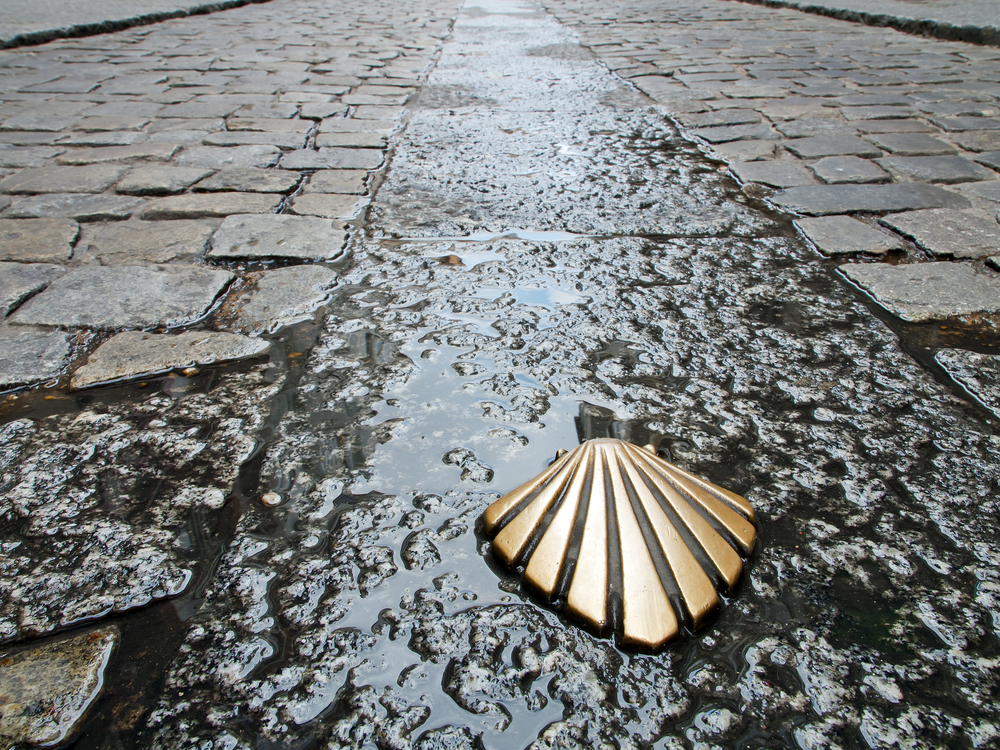
Basically you can walk the camino the whole year, but there are big differences between the different seasons. In Northern Spain along the way of the Camino there’s a mixture of oceanic, mediterranean and mountain climate. This means that the temperature can change drastically in a short time and there can be big differences between the different regions.
- January: cold (0-10 C) and mildly rainy /snowy – recommended only for professionals
- February: cold (0-10 C) and mildly rainy /snowy – recommended only for professionals
- March: moderately cold (10-15 C) and rainy
- April: moderately cold (10-15 C) and very rainy in the first part of the way (Navarra region), later a bit warmer and less rainy. This is the first month of the camino season
- May: still cool weather (12-20 C) with heavy rain, but sometimes with nice sunny days. You can have a beautiful view on the green flowery fields. This period is recommended with a waterproof poncho and boots.
- June: It’s ideal weather for walking, not too hot (20-30 C) and occassional light rain, and there are not so many pilgrims on the way! Strongly recommended period of the year!
- July: It’s a very hot month (30-40 C), without rain (1 or 2 days of 30), after 13 pm too hot to walk! There are many pilgrims on the way, sometimes albergues are full. Recommended only with sunhats and strong sun cream.
- August: It’s a very hot month (30-40 C), without rain (1 or 2 days of 30), after 13 pm too hot to walk! There are many pilgrims on the way, sometimes albergues are full. Recommended only with sunhats and strong sun cream.
- September: It’s not too hot (28-35 C), without rain (1 or 2 days of 30), there are not so many pilgrims on the way, you can always find accommodation in the albergues. Strongly recommended period for walking.
- October: Moderately warm month (15-25 C) with light rain, there might be some heavy rain at the end of the month.
- November: cold (5-15 C) and rainy – recommended only for professionals
- December: cold (0-10 C) and rainy /snowy – recommended only for professionals
Caminoteca’s advice for walking: June, September
 The address of the Pilgrims’ office in Saint-Jean-Pied-de-Port: Amies du Chemin de Saint Jacques at 39 rue de la Citadelle
The address of the Pilgrims’ office in Saint-Jean-Pied-de-Port: Amies du Chemin de Saint Jacques at 39 rue de la Citadelle
In season it is open from 7:30 AM to 13:00 PM and then from 14:00 PM to 20:00 PM (on Fridays and Sundays they open again later from 21:00 PM to 22:30 PM)
The telephone number is +33 559 37 05 09.
E-mail address: caminopa@hotmail.com
You can get your credential at the office in St Jean (pilgrim’s passport) , this is required for staying in albergues and collecting your stamps (sello) along your Camino to Santiago. Additionally, the pilgrim’s office has some maps and a list of albergues, this is always the most up-to-date list.
You can also find the city map of Saint-Jean-Pied-de-Port below, highlighted the pilrgim’s office on it.

If you can get some very professional, light and small size equipment for the Camino, use a 30 (woman) or 40 (man) liter backpack. But if you have ordinary stuff, 40 l (woman) or 50 l (man) will fit you much better. Avoid buying an oversized backpack, because you won’t resist packing it full…
Bear it in mind that the ideal weight of your backpack is about 10% of your bodyweight.

The bus company Conda provides a bus service from Pamplona to Saint-Jean-Pied-de-Port. This service is dedicated to the pilgrims who are walking on the Camino de Santiago. The bus service operates in 2017:
- 10:00 AM (1st June – 30th September)
- 12:00 PM (20th June – 5th September)
- 14:30 PM (1st March – 2nd November)
- 17:30 PM (1st April – 2nd November)
The bus leaves from the main bus station in Pamplona and costs €22. Tickets can be ordered from Conda’s web site or can be bought at the main bus station of Pamplona. More info: http://www.conda.es/
The other option to get to SJPdP is to take a taxi in Pamplona. The whole route (75 km – 47 miles) will cost you about 110 euros and it takes one and a half hour to get to the destination.

The most important part of your body on the Camino is your foot. With choosing the right pair of socks you will help yourself to prevent the blisters, they don’t let your feet to overheat and to sweat.
Select socks that fit your foot without being too tight or too loose.
Choose soft wicking fabric such as Coolmax
Lorpen is one of the most professional and popular brands on the Camino. Guaranteed quality
Don’t believe the brands and the marketing what promise you “no blister socks”. There is no 100 percent blister protection. Just one part is your socks but your shoes (or boots) and also your body, your skin and the shape of your feet can be a risk factor of getting blisters.
Try to avoid to wear cotton socks because cotton absorbs moisture and doesn’t help to breath the feet.
Ensure that the socks don’t have bulky stitching at the toes or heels. Don’t look for seamless socks (no stitching socks) on the internet, because they are not existing. There is no sock without a toe seam. The best quality socks will provide you no relief seam (Lorpen) or flat seam socks.
Many pilgrims choose to wear two layers of socks (or a sock that is made with double layers) on the Camino to aid in blister prevention. For the first layer they use liner socks, which are pretty fine, and then normal trekking socks for a second layer. It can work. The only problem with this system is the heat during the summer which can be to hot for wearing 2 socks on one foot.
Merino wool socks are also very popular on the Camino. People who start to use them they usually fall in love in their merino socks. Bear in mind that merino wool socks are usually thicker and warmer than the normal trekking socks.
Do not wear socks that are too worn. Thin areas, holes and stitches are very likely to produce hot spots and blisters.
On the Camino always carry a spare pair of socks. Change them during your walk if your feet become sweaty or wet.

The Camino will give you the best plan! With overplanning your Camino you can lose the real flavour of the way. Planning is possible but not necessary at all. The Camino takes on a life of its own and will foil your plans anyway, many wonders come to your way when there is no plan. Organize your way to Saint-Jean-Pied-de-Port, and then just follow the signs along the road, and walk together with the mass of your camino-friends. You can easily walk the Camino without any plans, moreover without guidebooks, but a map of the stages can help a lot. There are albergues almost in every village, so you can sleep anywhere you want, you can make a rest day anytime, and it depends on you how long you want to walk each day. If you want to walk alone, a good guidebook can be very useful (tip: John Brierley’s Pilgrim’s Guide) because you can find all the information about the stages, albergues, distances in it. You can also walk with new friends and plan your next days together.

Take in consideration when you plan a rest day on the Camino that you can stay only one night in most of the albergues. It’s reasonable to take rest days in locations where you can check into a hostel, or hotel. The hostels and pensions will cost you about 20-25 Euros per night and the hotels are 30-40 euros for one person.
There are lot of interesting and nice medium sized cities all along the Camino like Estella, Santo Domingo de la Calzada, Astorga, Villafranca del Bierzo and Ponferrada but the larger ones like Pamplona, Logroño, Burgos, León have plenty to do during the day and also in the evening. There are so many attractions in these larger towns especially during the weekends that you can easily spend here more than one day to rest.





